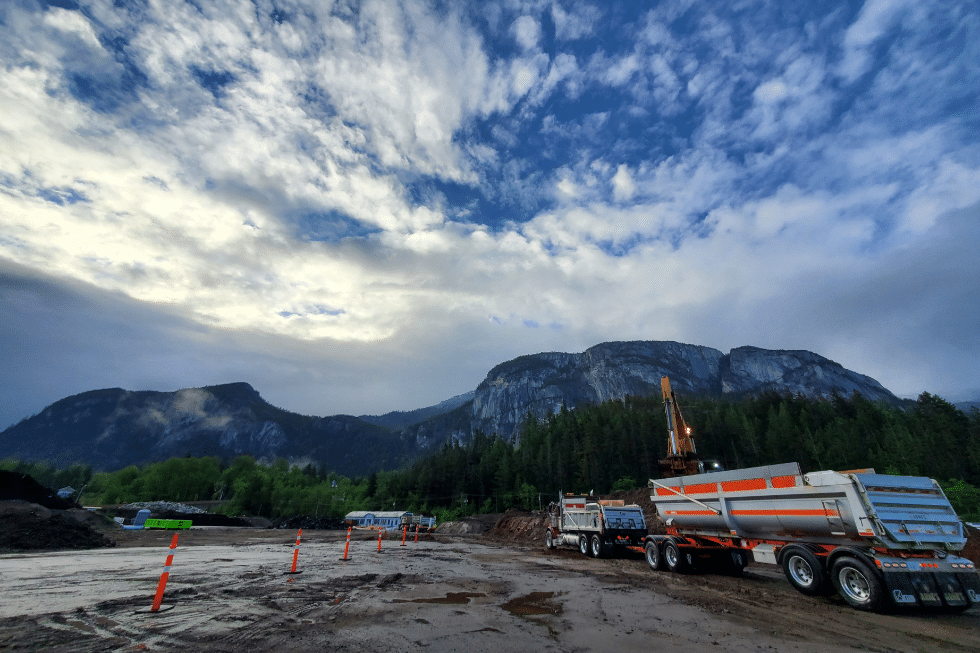The BC Ministry of Environment and Climate Change Strategy (BC ENV) has recently made changes to Pre-Approvals required under Protocol 6 to give more professional judgement authority to Contaminated Sites Approved Professionals (CSAP). Effective April 1, 2024, a Pre-Approval from BC ENV is no longer required for the following scenarios:
- Remediating a flow-through contaminated site.
- Area wide contamination from fill.
- Obtaining a certification document for an affected parcel before the source site is fully remediated.
- Remediating part of an operating facility and need a certification document or site release for that area.
- Contaminants appear in environmental media because of beneficial uses.
For the above scenarios, the rationale must be presented in a stand-alone section of the Preliminary Site Investigation (PSI) / Detailed Site Investigation (DSI) report submitted with the application for a certification document. The rationale should include, as a minimum, the following information:
Flow-Through Contamination
When reporting this scenario, you should include:
- All relevant information, including figures for the site and the surrounding area, demonstrating that contamination considered “flow-through” is originating from an upgradient neighbouring source parcel, is migrating through the site, and then leaving the site without an increase in concentration.
- Information about flow-through contaminants that have potential to break down into other products (e.g., perchloroethylene degrading to trichloroethylene, dichloroethylene and vinyl chloride). These breakdown products are considered part of the source contamination if you can show that they do not come from activities on the affected parcel.
Area Wide Contamination
Area wide contamination is contaminated fill that spreads over a large area and does not have a known historical source, an identifiable responsible person, or a designated environmental management area. Water lots may be impacted by area wide contamination. It also includes groundwater and vapour contamination that originates in the fill.
In this scenario, you do not have to investigate or remediate beyond the parcel boundaries, but you are still responsible for remediating all contamination within the boundaries of that parcel.
When reporting this scenario, you should include:
- All relevant information such as historical photos and maps, land use records, and investigation results at the site, and where possible for the surrounding area that show area wide contamination.
- Cross sections that clearly identify the soil and/or groundwater contamination that is confined to the fill layer.
Obtaining a Certification Document for an Affected Parcel Prior to the Remediation of the Source Parcel
Where a source parcel facility is no longer operational, the report should include the following information:
- A plan and schedule that shows how all remaining contamination will be remediated.
- A written reason for why a certification document or site release notice for the affected parcel is being requested, and not for the entire site.
Obtaining a Certification Document for Part of an Operating Facility
When the source site is still an operating facility, no additional information is required.
Beneficial Use
Beneficial use applies to contamination sourced from materials that have beneficial uses such as zinc from galvanized fencing, copper from copper pipe, Polycyclic Aromatic Hydrocarbons (PAHs) or other wood treatment chemicals from treated timber rail ties, utility poles or piles, etc., and sodium and chloride from road salting.
To prove a beneficial use, the following information should be included for the rationale:
- Demonstrate that the contamination from beneficial use materials doesn’t go significantly beyond the source.
- Demonstrate the beneficial use serves its intended purpose, or the materials associated with the beneficial use continue to be used.
- Include records that confirm the beneficial use materials were not produced or stored at the parcel.
Refer to Protocol 13 for the beneficial use exemptions. If the exemptions in Protocol 13 do not apply, the contamination from beneficial use materials must be evaluated using a Detailed Risk Assessment.
When remediating a parcel contaminated by beneficial use of road salt to meet numerical standards, and the same beneficial use will continue onto adjacent parcels or roadways, investigation or remediation beyond the parcel boundaries is not required for a numerical certification document.
***
Keystone Environmental can help you navigate these regulatory changes and help support your project needs. We can recognize issues, evaluate risks, and effectively apply professional judgement to support you in achieving your project objectives. Contact us for more information.
***
Summary written by: Michael Geraghty, M.Sc., P.Geo., CSAP, Senior Technical Manager
Source & Related Links:
BC Ministry of Environment and Climate Change Strategy (ENV), Site Remediation News
Remediation Planning, Pre-Approvals

